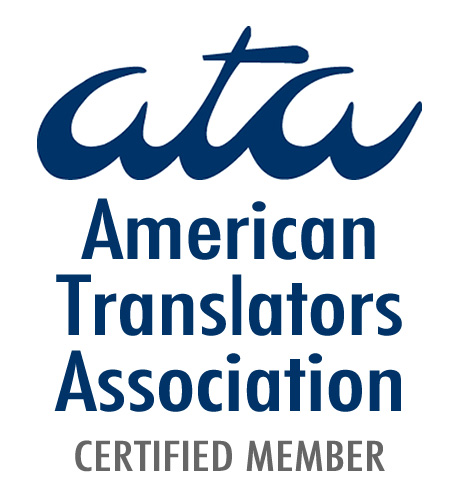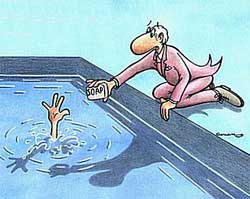

 Words embedded in the culture of one country often have no
precise equivalents in the language of another.
The anthropologist Edward Hall points out: “No two languages
are alike; some are so dissimilar that they force the speaker into
two different images of reality.”
For an American, the word “lunch” may suggest a ham
and cheese sandwich and a cup of coffee, while for a Russian,
“obed” points to a salad, soup, meat, fried
potatoes, and dessert.
It takes an interpreter with a thorough knowledge of both
language and culture to provide an accurate reflection
of the true meaning behind the words.
As the Japanese say, you have to understand not only the words,
but also the silence between them.
Words embedded in the culture of one country often have no
precise equivalents in the language of another.
The anthropologist Edward Hall points out: “No two languages
are alike; some are so dissimilar that they force the speaker into
two different images of reality.”
For an American, the word “lunch” may suggest a ham
and cheese sandwich and a cup of coffee, while for a Russian,
“obed” points to a salad, soup, meat, fried
potatoes, and dessert.
It takes an interpreter with a thorough knowledge of both
language and culture to provide an accurate reflection
of the true meaning behind the words.
As the Japanese say, you have to understand not only the words,
but also the silence between them.
“Interpreting is a tough job. It requires a love of words, a
respect for the law, strength of character, stamina, and humility.
The goal is to do the job so well that the language barrier simply
evaporates...”
— Jim Watrous, from
The Business Journal, Law - Legalese Column
A good translator must have a talent for languages, know the languages extremely well, have a good all-around education, a lot of stamina, and a tremendous command of terminology and vocabulary. An initial penchant or gift for ability to think in two (or more) languages at the same time needs to be present, the professional training in code switching and moving back and forth between the languages is a must, but a vast knowledge of many subjects is a prerequisite. Most people believe that if you are bilingual, you can interpret. That's about as true as saying that if you have two hands, you can be a concert pianist.
Not even the best translator or interpreter can step into an assignment unprepared. For more in-depth knowledge of the subject, a language professional requires background materials: documentation on the subject, company- and industry-specific terminology, as well as information on the company, speakers, and even the audience — information that only the client can supply. Sometimes it is sufficient just to glance over the outline before the speech or seminar. But often, translators and interpreters spend many hours on preliminary research. How much supporting material the client provides and how much time the language professional spends on preparation will in the end decide whether they are partners in the art of translation or in the crime of distortion.
Certified Russian translation by a Certified Russian Translator: Sonia Melnikova-Raich is a Russian-English translator certified by American Translators Association (ATA). She is a certified Russian translator, certified Russian interpreter, certified court interpreter, Russian court interpreter certified by the State of California and Judicial Council of California, and a federal court interpreter. She has twenty years experience with expertise in legal translation, business translation, real estate translation, health care translation, medical translation, education translation, environment translation, communication translation, social services translation, social science translation, marketing and advertising translation and cultural adjustment, religion translation, art, film and video translation, architecture translation, and literary translation from Russian into English and from English into Russian. She works as a court interpreter for Superior Court of California, US Federal Court, USCIS (INS), Workers Compensation Board, and interprets for depositions, arbitration, trials, immigration and political asylum interviews, business meetings, and conferences. She provides certified translation of diplomas, academic transcripts, birth certificates, death certificates, marriage certificates, divorce certificates, adoption papers, immigration documents, business contracts, immunization records, and other legal documents in compliance with requirements of the USCIS (INS), US courts, credentials evaluation services, medical boards, boards of registered nursing, American colleges and universities. She can also provide a certificate of translation (affidavit of translation or affidavit of translation accuracy), and notarized translation, if needed. She translates from English into Russian and from Russian into English. She interprets English to Russian and Russian to English, performing consecutive interpreting, simultaneous interpreting, sight interpreting, and voice over. Other services include linguistic analysis of company and product names, localization and cultural adjustment, Russian-American cross-cultural communication, cultural sensitivity training, and cross-cultural conflict resolution.